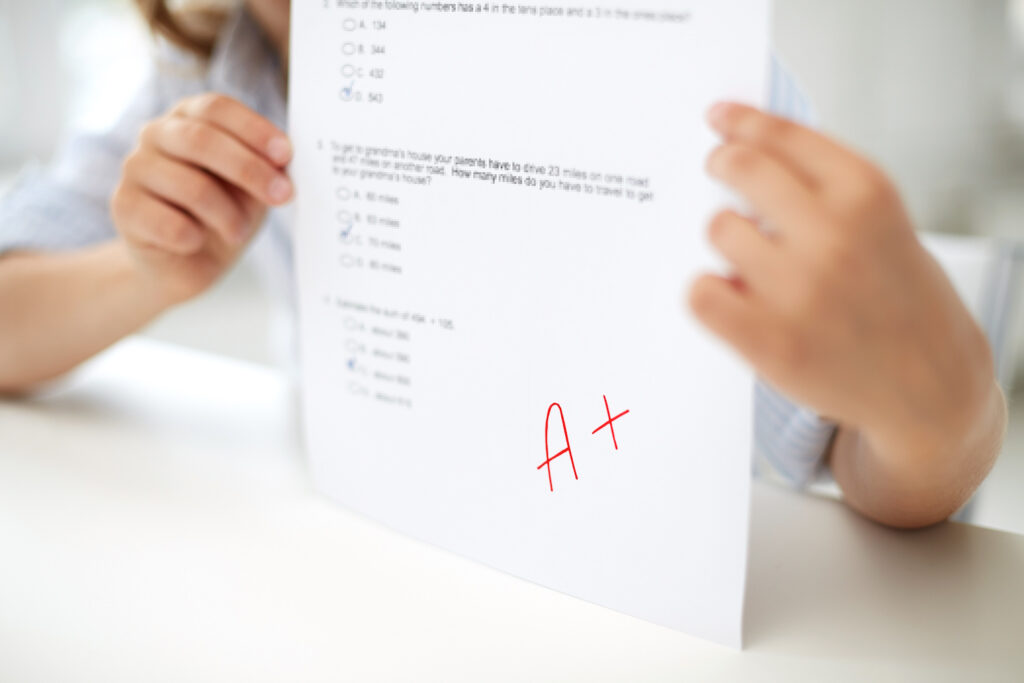Despite plummeting test scores, most public school parents wrongly believe their student is at or above grade level
While the academic decline during and since the COVID-19 pandemic is now widely known, most parents don’t realize how much their own children are struggling.
The 2022 NAEP scores ranked 30% of…

While the academic decline during and since the COVID-19 pandemic is now widely known, most parents don’t realize how much their own children are struggling.
The 2022 NAEP scores ranked 30% of 8th graders below basic in reading and 38% below basic in math. “Below basis” is the worst ranking possible.
Public schools reported that half their students started the 2022-23 year below grade level, but parents said only 2% of students received “high-quality tutoring” at school.
And the average ACT score for 2022’s high school graduates was 19.8, the lowest average in 30 years.
However, a nationwide survey found that 90% of public school parents believe their student is at or above grade level in reading and/or math.
And 80% of parents are very confident they have a clear understanding of their child’s academic achievements.
Quite a few of those parents may be in for a rude awakening, since only a third of 4th and 8th graders read proficiently and just 37% and 27%, respectively, do math at grade level.
This begs the question: why are so many parents apparantly unaware of their own child’s academic struggles?
‘They don’t know if their child needs more help’
Two former U.S. Secretaries of Education commented on the survey and suggested the message the school is sending home to parents may not align with the test scores.
“That’s why our NAEP, our national report card and our standardized test scores really are an important indicator for parents to understand that, along with the feedback that they get from parent report cards,” said Margaret Spelling, who served under President George W. Bush.
“Parents are the greatest advocates for their children,” added Arne Duncan, who served under President Obama. “But if they don’t know if their child needs more help in reading or more help in math or whatever it might be, they don’t know what to do.”
Report cards are also becoming increasingly difficult to decipher.
According to Scholastic, many school districts won’t use traditional letter grades until 3rd or 4th grade – instead opting for marks like D for developing, E for expanding, S for satisfactory or N for needs improvement.
Some teachers abandon traditional grades altogether. Instead, they might give parents rubrics, narrative descriptions, or an analysis of learning outcomes.
Parents who don’t spend the time deciphering these novel or unfamiliar assessment methods may simply assume their student is doing well.
Some parents may also be misled by inflated grading strategies, meant to encourage students.
For example, Kansas City Public Schools give students a minimum of 40% – even if no work is submitted. Clark County in Nevada and Arlington in Virginia do the same, except their minimum is 50%.
Inflated classroom grades may indicate a student is making academic progress while the standardize test results reveals otherwise.
Additionally, the dramatic rise of single parenting in the United States may be contributing to fewer parents being aware of or able to meet their student’s academic needs.
Research confirms that NAEP scores are lower in states with higher proportions of single-parent households.
In fact, the U.S. has the highest rate of single parents of any nation in the world.
It’s well established that parental involvement is a net positive for education. Students with engaged parents have better attendance, behavior, and receive better grades, the Annie E. Casey Foundation reports.



